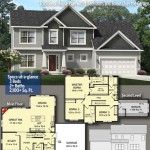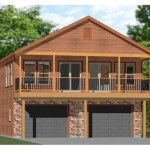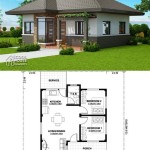What Scale Should Planning Drawings Be Included?
The selection of an appropriate scale for planning drawings is a critical aspect of the planning application process. Scale directly influences the level of detail that can be represented, the clarity of the information conveyed, and ultimately, the ease with which planning authorities can assess the proposed development. Choosing the correct scale ensures that all necessary information is presented in a readily understandable format, minimizing the potential for delays or rejections due to inadequate or ambiguous documentation. This article will explore the factors influencing the choice of scale for planning drawings, examine common scales used for different drawing types, and emphasize the importance of adhering to best practices for consistent and effective communication.
Planning drawings serve as the primary visual representation of a proposed development, providing stakeholders, including planning officers, neighbors, and other interested parties, with a clear understanding of the project's design, layout, and impact on the surrounding environment. These drawings are essential for evaluating compliance with planning regulations, assessing the potential environmental impact, and ensuring that the development aligns with the local planning framework. The scale at which these drawings are produced directly affects their interpretability and usefulness in the decision-making process. A scale that is too small may lack sufficient detail, making it difficult to assess critical aspects such as building dimensions, site levels, and boundary treatments. Conversely, a scale that is overly large may result in drawings that are cumbersome to handle and difficult to comprehend in their entirety.
The regulations and guidance pertinent to planning applications generally specify the expected scales for various types of drawings. Local planning authorities often have their own supplementary planning documents (SPDs) or design guides that further elaborate on these requirements, emphasizing the importance of adhering to local standards. While there may be some flexibility depending on the complexity and nature of the project, deviating significantly from established norms can raise concerns and potentially lead to requests for additional information or revised drawings. Therefore, it is crucial to consult the relevant planning regulations and guidance documents at the outset of the project to ensure that the chosen scales align with the specific requirements of the jurisdiction. Doing so can minimize the risk of costly revisions and delays and contributes to a smoother and more efficient planning approval process.
Factors Influencing Scale Selection
Several factors dictate the most suitable scale for planning drawings. These factors include the size of the proposed development, the complexity of the design, the level of detail required, and the specific requirements of the local planning authority. Smaller developments on relatively simple sites may necessitate less detailed drawings, allowing for the use of smaller scales. Conversely, larger, more complex projects, particularly those involving significant alterations to existing buildings or substantial changes to the site topography, will generally require larger scales to adequately represent the design and its impact on the surroundings. The specific type of drawing also plays a crucial role in determining the appropriate scale. Site plans, for example, typically require smaller scales than detailed elevation drawings or construction details.
The intended purpose of the drawing is another key consideration. Drawings submitted for outline planning permission, which seek approval for the principle of development, may not require the same level of detail as drawings submitted for full planning permission, which require comprehensive information about all aspects of the proposed development. Similarly, drawings used for consultation purposes may be produced at a different scale than those submitted for formal assessment. The complexity of the surrounding environment also influences scale selection. Developments in sensitive areas, such as conservation areas or listed building settings, often require more detailed drawings at larger scales to accurately depict the relationship between the proposed development and the existing built environment.
The availability of suitable paper sizes should also be considered when selecting a scale. Standard architectural paper sizes, such as A0, A1, A2, A3, and A4, are commonly used for planning drawings. The chosen scale should allow the drawing to be printed legibly and accurately on one of these standard sizes. If a drawing is excessively large or small, it may be difficult to reproduce accurately or to handle effectively. The accessibility of the drawings to different stakeholders is also important. Drawings should be clear and easy to understand for both technical and non-technical audiences. Using standard scales and conventions promotes consistency and reduces the likelihood of misinterpretations.
Common Scales for Different Drawing Types
Certain scales are commonly used for specific types of planning drawings. Site plans, which show the overall layout of the proposed development in relation to its surroundings, are typically drawn at scales ranging from 1:200 to 1:500, or even 1:1250 for larger sites. These scales provide a sufficient overview of the site boundaries, building footprints, access roads, parking areas, landscaping, and other key features. For smaller sites, a scale of 1:100 may be appropriate to provide greater detail. Location plans, which show the site's location within the wider area, are typically drawn at a scale of 1:1250 or 1:2500, allowing for easy identification of the site in relation to surrounding landmarks and infrastructure.
Floor plans, which depict the internal layout of the proposed building, are commonly drawn at a scale of 1:50 or 1:100. These scales allow for the clear representation of room dimensions, door and window positions, and the arrangement of fixtures and fittings. For complex buildings with intricate layouts, a scale of 1:20 may be necessary to provide sufficient detail. Elevation drawings, which show the external appearance of the building from different viewpoints, are also typically drawn at a scale of 1:50 or 1:100. These drawings should accurately depict the building's height, width, and depth, as well as the materials and finishes to be used. Section drawings, which show a vertical cut through the building, are used to illustrate the relationship between different floor levels and the internal construction details. These drawings are typically drawn at the same scale as the floor plans and elevation drawings.
Detailed drawings, such as those showing window and door details, construction details, or landscaping features, may require larger scales, such as 1:10, 1:20, or 1:5, to accurately represent the necessary level of detail. These drawings are often used to demonstrate compliance with building regulations or to provide specific information for contractors. It is important to note that these are general guidelines, and the specific scale chosen for each drawing should be determined based on the factors discussed earlier. It is always advisable to consult with the local planning authority to confirm their preferred scales for different types of drawings.
Importance of Consistency and Best Practices
Maintaining consistency in the use of scales throughout the planning application is crucial for ensuring clarity and avoiding confusion. All drawings should be clearly labeled with their respective scales, and these scales should be consistent with the information presented in the drawing. Using different scales within the same drawing set can lead to misinterpretations and errors. It is also important to ensure that the drawings are accurately scaled and that all dimensions are clearly indicated. Discrepancies between the drawings and the written specifications can result in delays and potentially invalidate the planning permission.
Following best practices for the preparation of planning drawings is essential for ensuring their quality and effectiveness. These practices include using clear and legible line weights, using standard symbols and conventions, and providing sufficient annotations and labels to explain the information presented in the drawing. Drawings should be professionally drafted and presented, and they should be free from errors and omissions. It is also important to keep the drawings up-to-date and to revise them as necessary to reflect any changes to the proposed development.
Digital drawings, commonly created using computer-aided design (CAD) software, offer several advantages over traditional hand-drawn drawings. CAD drawings can be easily scaled, modified, and reproduced, and they can be shared electronically with other stakeholders. However, it is important to ensure that digital drawings are properly formatted and that they are compatible with the software used by the local planning authority. It is also important to maintain a consistent file naming convention and to archive the drawings securely to prevent data loss. Properly adhering to planning regulations and best practices ensures a smoother process, ultimately increasing the likelihood of a successful planning outcome.

Planning Drawings Here S What Architects Say About Urbanist Architecture Small Company London

How To Read A Floor Plan With Dimensions Houseplans Blog Com

How To Read A Floor Plan With Dimensions Houseplans Blog Com

Technical Drawing Plans

Planning Drawings

How To Read A Floor Plan With Dimensions Houseplans Blog Com

Producing Drawings For Planning Permission S

Planning Drawings Go Plans

Planning Drawings

Floor Plan Symbols Abbreviations Your A Z Guide Cedreo
Related Posts








